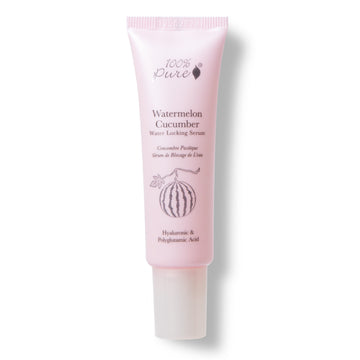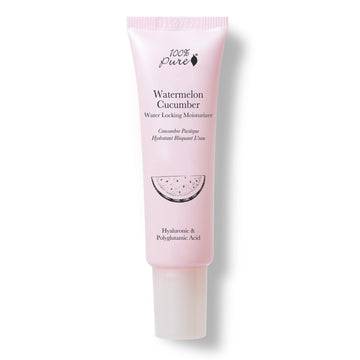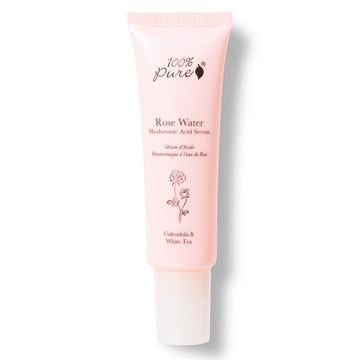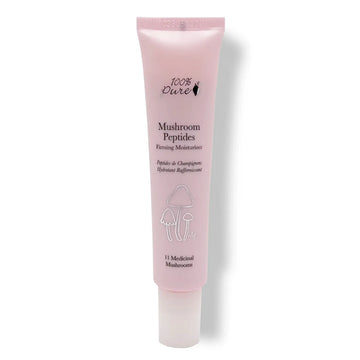Which Ingredient Reigns Supreme for Your Skin?
Written by: 100% PURE ®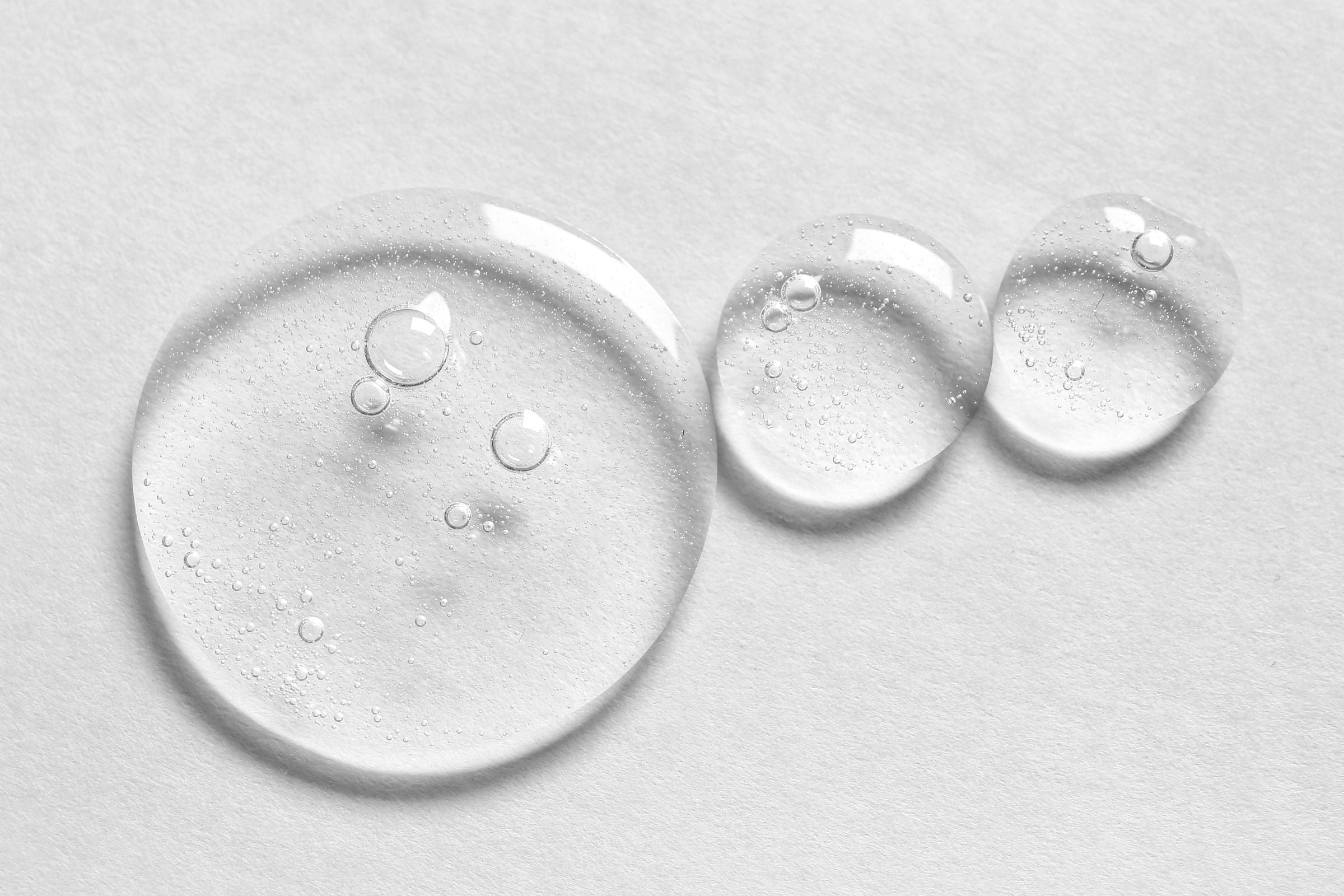
Hydration is more than just a buzzword in skincare; it's a fundamental aspect of maintaining a healthy and radiant complexion. The journey towards optimal skin hydration often leads to a myriad of choices, with ingredients like squalane and hyaluronic acid emerging as frontrunners. These two have garnered considerable attention in the beauty world, each bringing unique properties to the table.
Squalane, a hydrocarbon derived from plants or shark liver, has been praised for its emollient properties and ability to mimic the skin's natural oils. It's known for its lightweight texture and non-comedogenic nature, making it a suitable choice for a variety of skin types. On the other hand, hyaluronic acid, a naturally occurring substance in our skin, is celebrated for its incredible ability to retain moisture. It can hold up to 1000 times its weight in water, making it a hydration powerhouse.
In this article, we delve into a detailed comparison of squalane and hyaluronic acid. We'll explore their benefits, how they work, and for whom they might be best suited. This comparison aims to arm you with the knowledge to make an informed decision about which ingredient could be the reigning champion of hydration for your skincare routine.
Squalane is a hydrocarbon derived from squalene, a compound naturally produced by our bodies and found in various natural sources. Unlike squalene, squalane is hydrogenated, meaning it's more stable and less prone to oxidation, making it an ideal ingredient for skincare products. It's celebrated for its exceptional moisturizing properties and ability to mimic the skin's natural oils.
The benefits of squalane for the skin are numerous. It's an excellent emollient, meaning it softens and smooths the skin, making it feel plumper and more supple. Because it's similar to the skin's natural oils, squalane helps to restore the lipid barrier, aiding in moisture retention and protection against environmental stressors. Additionally, it's non-comedogenic, which means it won't clog pores, making it suitable for all skin types, including oily and acne-prone skin. Squalane also has anti-inflammatory properties, which can soothe skin conditions like eczema and psoriasis.
Squalane can be sourced from both animal and plant sources. Historically, it was derived from shark liver, but due to sustainability and ethical concerns, most cosmetic-grade squalane now comes from plant sources like olives, sugarcane, and rice bran. This shift not only addresses environmental and ethical issues but also makes it a vegan-friendly ingredient. The sustainability of squalane depends largely on the source; plant-derived squalane is generally considered more sustainable and eco-friendly.
One of the reasons squalane is so effective in skincare is its excellent absorption qualities. Its molecular structure is very similar to that of human skin, allowing it to penetrate deeply and integrate seamlessly into the skin's lipid barrier. This deep penetration enhances its effectiveness in hydration and nourishment. Unlike some other oils that sit on the skin's surface, squalane gets absorbed quickly without leaving a greasy residue. Once absorbed, it helps to replenish the lipid layer, fighting off dryness and promoting a healthy, hydrated, and radiant complexion.
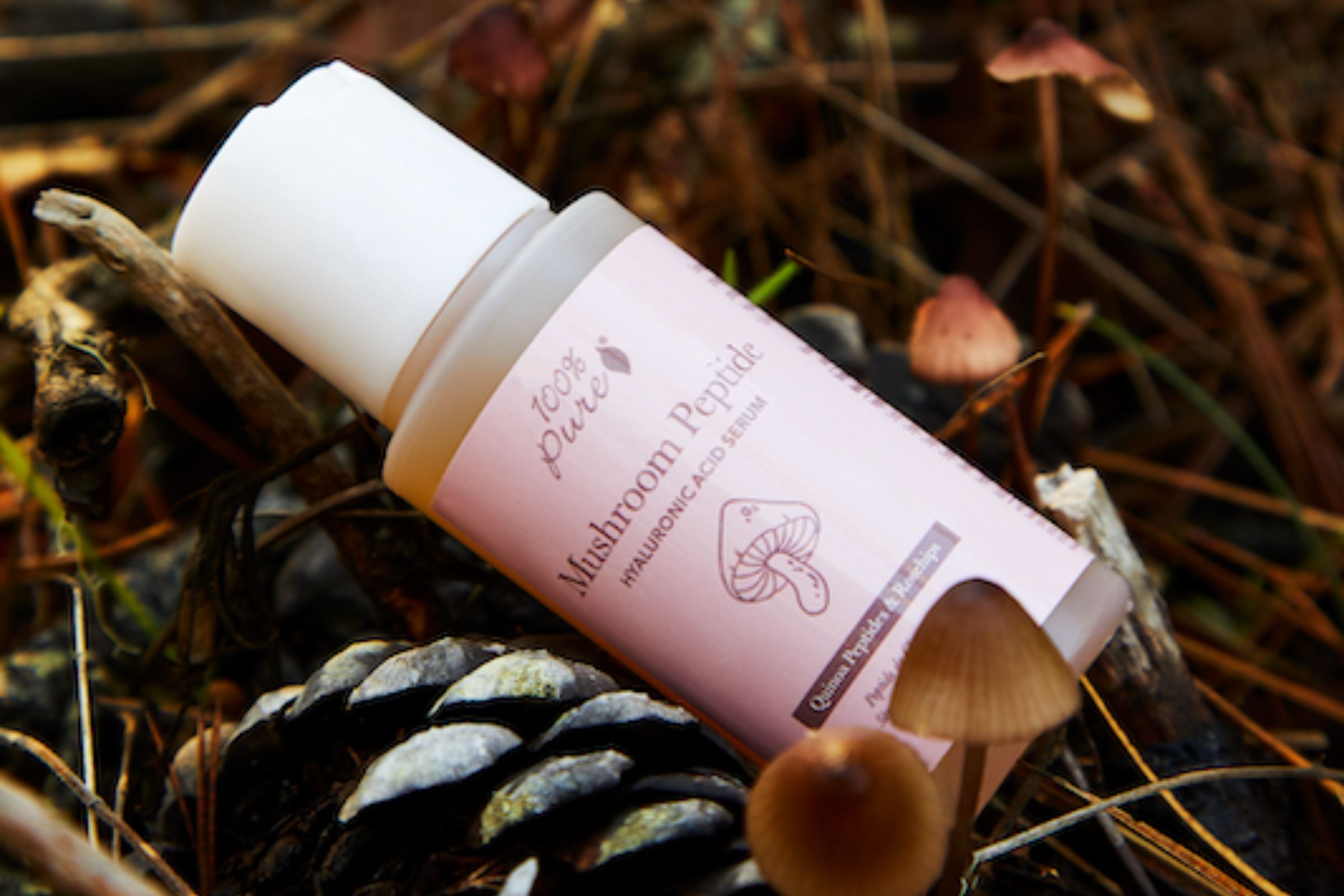
Hyaluronic acid, a naturally occurring substance in the human body, plays a pivotal role in maintaining skin health. Predominantly found in the skin, connective tissues, and eyes, its primary function is to retain water, ensuring your skin remains hydrated and plump. This clear, gooey substance can hold up to 1000 times its weight in water, making it an essential component for skin hydration and elasticity.
The Science of Moisture Retention
The secret behind hyaluronic acid's remarkable ability to retain moisture lies in its molecular structure. It works by attracting and holding onto water molecules, acting as a sponge within the skin. This not only helps in keeping the skin hydrated but also contributes to its appearance, making it look more dewy and youthful. Furthermore, hyaluronic acid plays a role in wound healing and repairing tissue damage, proving its versatility beyond mere hydration.
Variations in Skincare: Not All Hyaluronic Acid Is Created Equal
In skincare, hyaluronic acid comes in various forms, each with its unique benefits. The most common forms include:
Pure Hyaluronic Acid:This form is directly derived and offers intense hydration, best suited for dry or aging skin. It's typically found in serums and is celebrated for its deep penetration and long-lasting hydration.
Sodium Hyaluronate: A salt form of hyaluronic acid, it has a lower molecular weight, allowing it to penetrate the skin more easily. This form is often used in lightweight moisturizers and is ideal for oily or combination skin types.
Hydrolyzed Hyaluronic Acid: Broken down into smaller fragments, this type of hyaluronic acid is more easily absorbed by the skin, making it effective for immediate hydration. It's commonly found in a variety of skincare products, from serums to creams.
Cross-Linked Hyaluronic Acid: This innovative form creates a mesh-like structure on the skin's surface, providing long-lasting hydration and a visible plumping effect. It is often used in advanced anti-aging products.
Each type of hyaluronic acid serves a specific purpose, catering to different skin needs and preferences. Whether it's deep hydration, rapid absorption, or anti-aging benefits, there's a hyaluronic acid variant that fits every skin type and concern.
Texture and Feel on the Skin
Squalane and hyaluronic acid are both celebrated for their hydrating properties, but they offer distinct experiences in texture and feel on the skin.
Squalane, particularly olive squalane found in products like Watermelon Cucumber Water Locking Serum and Moisturizer, is known for its lightweight, non-greasy texture. It mimics the skin's natural oils, making it an excellent moisturizer that leaves the skin feeling soft and plump without a heavy residue.
Hyaluronic Acid, on the other hand, is noted for its ability to retain water, creating a deeply hydrating effect. Found in products like the Rose Hyaluronic Acid Serum and Mushroom Peptide Moisturizer, it typically has a gel-like texture that feels refreshing and soothing on the skin. It absorbs quickly, leaving the skin feeling hydrated and rejuvenated.
Best Practices for Application
Squalane: Best applied after water-based serums and before heavier creams. A few drops warmed between the fingers can be pressed gently onto the face and neck. It's excellent for locking in moisture and can be used both morning and night.
Hyaluronic Acid: Should be applied to damp skin for maximum efficacy. It works best when layered under a moisturizer to seal in hydration. Ideal for use in both morning and evening skincare routines.
Incorporating into Your Skincare Routine
Morning Routine:
After cleansing, apply a hyaluronic acid-based product like Rose Water Hydrating Milk to damp skin for deep hydration.
Follow up with a squalane-containing product, such as the Watermelon Cucumber Water Locking Serum, to lock in moisture and protect the skin barrier.
Finish with an olive squalane-based moisturizer to nourish and replenish the skin while you sleep.
By understanding these differences and application methods, you can effectively use both squalane and hyaluronic acid to achieve balanced, hydrated, and radiant skin.
When it comes to skincare, combining the right ingredients can be just as crucial as choosing them. Squalane and hyaluronic acid, celebrated for their moisturizing properties, can be used together, creating a skincare synergy that offers enhanced benefits.
Squalane and hyaluronic acid can be effectively paired in a skincare routine. Squalane, known for its emollient properties, helps to soften and smooth the skin, locking in moisture without leaving an oily residue. Hyaluronic acid, on the other hand, is a humectant that draws moisture into the skin, providing hydration and a plumping effect. When used together, they address different aspects of skin hydration and moisture retention.

When it comes to choosing between squalane and hyaluronic acid, understanding your skin type is crucial. Both ingredients offer unique benefits, but their effectiveness can vary depending on individual skin needs.
Dry Skin
For those with dry skin, hydration is key. Hyaluronic acid is a powerhouse in retaining moisture, as it can hold up to 1000 times its weight in water. This makes it exceptional for parched skin, providing deep hydration and reducing the appearance of fine lines caused by dehydration.
Squalane, on the other hand, is a lightweight, non-greasy oil that mimics your skin's natural oils. It provides a barrier that helps lock in moisture, making it beneficial for dry skin types. It's particularly effective in colder months or harsh climates, where skin might need an extra protective layer.
Oily Skin
Oily skin types might shy away from oils, but squalane's non-comedogenic nature means it won't clog pores. It's remarkably lightweight and can help regulate excess oil production, making it a suitable choice for oily skin.
Hyaluronic acid is also a great option for oily skin due to its lightweight, water-based formulation. It hydrates without adding oiliness, helping to maintain a balance in the skin's hydration levels.
Combination Skin
Combination skin can benefit from both ingredients. Hyaluronic acid can be used across the entire face for overall hydration, while squalane can be applied to drier areas that need more moisture. This dual approach addresses the varying needs of combination skin effectively.
Sensitive Skin
Sensitive skin requires gentle care, and both squalane and hyaluronic acid are generally well-tolerated. Squalane's similarity to natural skin oils makes it less likely to irritate, while hyaluronic acid's natural occurrence in the body reduces the risk of adverse reactions.
Addressing Specific Skin Concerns
Aging
Hyaluronic acid's ability to plump and hydrate the skin makes it ideal for tackling fine lines and wrinkles. It helps in maintaining skin elasticity, which is crucial in the fight against aging.
Squalane's antioxidant properties also aid in protecting against skin damage and may help to reduce the appearance of fine lines by keeping the skin supple and moisturized.
Acne
For acne-prone skin, hyaluronic acid provides hydration without exacerbating breakouts. Its moisture-binding properties ensure that the skin is hydrated without being oily.
Squalane, while moisturizing, should be used with caution on acne-prone skin. Its emollient properties are beneficial, but it's important to ensure it doesn't contribute to clogged pores.
Will squalane make my skin oily?
Squalane is known for its lightweight and non-greasy texture, so it's unlikely to make your skin feel oily. In fact, its molecular structure is very similar to the skin's natural oils, allowing it to hydrate the skin without leaving a heavy residue. It's generally well-tolerated by most skin types, including oily and acne-prone skin.
Can hyaluronic acid be used in all climates?
Hyaluronic acid can be used in various climates, but its effectiveness might vary. In humid environments, it excels at drawing moisture from the air into the skin. However, in very dry climates or during winter, there's less moisture in the air, so it might draw moisture from the deeper layers of the skin instead, potentially leading to dehydration. In such cases, it's recommended to use it in conjunction with a more occlusive moisturizer to lock in hydration.
Are there any side effects to using squalane or hyaluronic acid?
Both squalane and hyaluronic acid are generally well-tolerated and safe for most skin types. Squalane is non-irritating and non-comedogenic. Hyaluronic acid is also gentle, although in rare cases, products with very high concentrations may cause mild irritation. As with any skincare product, it's always advisable to patch test before full application.
How often should I use these ingredients in my skincare routine?
Squalane and hyaluronic acid can be used daily, both in the morning and evening routines. The frequency of use can depend on your skin's needs and the specific product formulations. Some products might be designed for use only once a day, while others can be used twice a day.
Can squalane and hyaluronic acid replace my moisturizer?
While squalane and hyaluronic acid are excellent for hydration and moisture retention, they might not fully replace the comprehensive benefits of a moisturizer, especially for dry or mature skin types. Moisturizers often contain a blend of humectants, emollients, and occlusives, providing a more complete hydration and barrier protection. Squalane and hyaluronic acid can be used alongside or even in your moisturizer to boost its hydrating effects.
As we wrap up our in-depth exploration of squalane and hyaluronic acid, it's clear that both ingredients offer unique and beneficial properties for skin care. Squalane, derived primarily from plants and shark liver, stands out for its exceptional moisturizing capabilities and its ability to mimic the skin's natural oils. This makes it particularly effective in enhancing skin hydration and elasticity, making it an ideal choice for those with dry or aging skin.
Hyaluronic acid, on the other hand, is celebrated for its astounding ability to retain water—up to 1000 times its weight. This property makes it a powerhouse in maintaining skin hydration, plumping up the skin, and reducing the appearance of fine lines and wrinkles. It's a go-to ingredient for those seeking to maintain a youthful, dewy complexion.
The choice between squalane and hyaluronic acid ultimately depends on your skin's specific needs. If your skin is dry or mature, you might find the nourishing properties of squalane more beneficial. In contrast, if hydration and plumping are your primary concerns, hyaluronic acid could be your hero ingredient.
It's essential to remember that skincare is deeply personal. What works for one person might not work for another. Therefore, it's crucial to understand your skin type, its needs, and how it reacts to different ingredients. Don't hesitate to experiment and find what truly works for you.
- Tags: November-2023, Skin Care, skincare
We carefully hand-select products based on strict purity standards, and only recommend products we feel meet this criteria. 100% PURE™ may earn a small commission for products purchased through affiliate links.
The information in this article is for educational use, and not intended to substitute professional medical advice, diagnosis, or treatment and should not be used as such.












